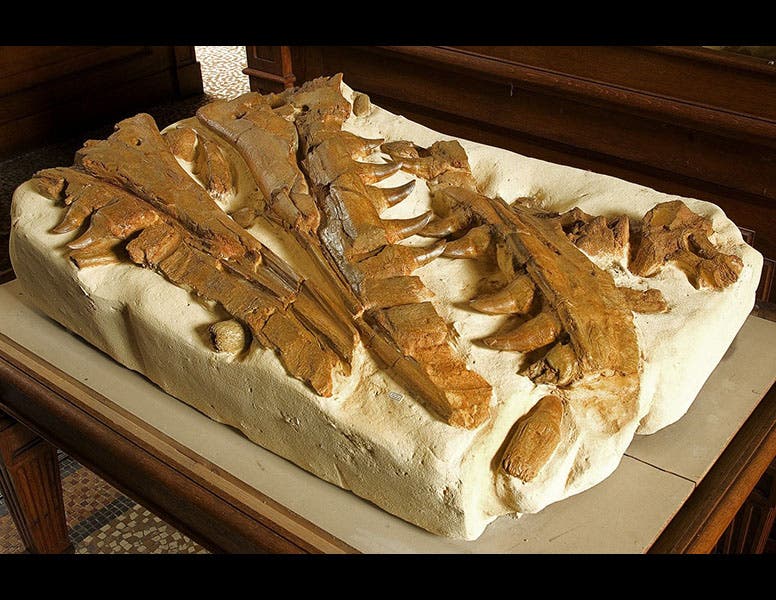Scientist of the Day - Pieter Camper

Linda Hall Library

Linda Hall Library
Pieter Camper, a Dutch naturalist also known as Petrus Camper, was born May 11, 1722, in Leiden. Camper was an avid collector of fossils, and in 1782 he acquired the collection of a surgeon, Jean Hoffmann. Hoffmann’s fossils had mostly been dug out of quarries at St. Pietersberg mountain near Maastricht, and included a huge jaw of an unknown animal. Camper described the specimen in a letter to the Royal Society of London in 1786 (first image) and ventured that the jaw belonged to a large toothed whale. Another specimen, this time a skull with both jaws (second image), was discovered in the same quarry and acquired by a Frenchman, Barthélemy Faujas-de-St.-Fond, who disagreed with Camper’s identification, and thought it belonged to a large crocodile. After Camper died in 1789, Faujas published a beautiful account of the fossils of St. Pietersberg, illustrating both his and Camper’s specimens with fine engravings, and adding a fanciful print showing the supposed discovery of the skull. We displayed this engraving in out 2009 exhibition, The Grandeur of Life.
But both men were wrong in their identifications. The great anatomist Georges Cuvier later showed that the skull and jaws belong to a large Mesozoic marine reptile, now known as Mosasaurus hoffmanni, which grew over forty feet long and swam the seas in the age of dinosaurs.
The jaw illustrated by Camper in his 1786 paper is now in Teylers Museum in Haarlem (third image). The complete skull described by Faujas, with 35 feet of added skeleteon, is on display in the Natural History Museum of Maastricht (fourth image).
Because Camper was a professor of anatomy, he was the subject of the obligatory anatomy lesson group portrait, made famous by Rembrandt’s Anatomy Lesson of Dr. Tulp (1632). The Anatomy Lesson of Petrus Camper (1758), now in the Amsterdam Museum (fifth image). Camper is the figure at far right, about to take a scalpel to a most unique headstand.
Dr. William B. Ashworth, Jr., Consultant for the History of Science, Linda Hall Library and Associate Professor, Department of History, University of Missouri-Kansas City. Comments or corrections are welcome; please direct to ashworthw@umkc.edu.









